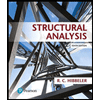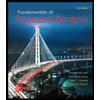Mass of original saonAT-TA DA R0 212YJAMA EV2-S.ON T23T YAOTARO8AJ V. DATA AND TABULATION Mass of container, Me -. Mass of container + original sample, Me+w= Mass of container + dried sample, Me+D = 472 = W slqmsz lsnigito to zz6M (b =0 elgm62 bshb to 226M (9 g. 520 g. g. g. Mass of dried sample, g. VI. CALCULATIONS (a) C3MIATIA TMUOMA 1. Calculate total evaporable moisture content as follows: p= 100 (" D) D 288 (1) where: = total evaporable moisture content of sample. percent. mass of original sample, g, ander,t mass of dried sample. g. 8\E %3D T'840 08e and MAS 000, IstoT [4]
Mass of original saonAT-TA DA R0 212YJAMA EV2-S.ON T23T YAOTARO8AJ V. DATA AND TABULATION Mass of container, Me -. Mass of container + original sample, Me+w= Mass of container + dried sample, Me+D = 472 = W slqmsz lsnigito to zz6M (b =0 elgm62 bshb to 226M (9 g. 520 g. g. g. Mass of dried sample, g. VI. CALCULATIONS (a) C3MIATIA TMUOMA 1. Calculate total evaporable moisture content as follows: p= 100 (" D) D 288 (1) where: = total evaporable moisture content of sample. percent. mass of original sample, g, ander,t mass of dried sample. g. 8\E %3D T'840 08e and MAS 000, IstoT [4]
Chapter2: Loads On Structures
Section: Chapter Questions
Problem 1P
Related questions
Question
Using given data and formulas, calculate evaporable moisture, surface moisture and absorption
![V.
DATA AND TABULATION
35
Mass of container, Me-
Mass of container + original sample, Me+w=
Mass of container + dried sample, Me+D = 472
= W slgms2 Isnigino to z26M (b
=0elgm62 bsihb to 226M (9
g.
520
g.
g.
Mass of original sample, W=
Mass of dried.
g.
ed sample, DAT-2TABHA 30 212YJAMA EVE2-S.ON T23T YAOTAROBAJ
g.
VI.
CALCULATIONS
(a) C3MIATIR TVUOMA
Calculate total evaporable moisture content as follows:
1.
p = 100 (IT D) D
288
(1)
where:
= total evaporable moisture content of sample. percent.
mass of original sample, g, ander,t
= mass of dried sample. g.
81E
8.
T'810
08e
ASHT
T 27
eve
MAS
000,21
IstoT
[4]](/v2/_next/image?url=https%3A%2F%2Fcontent.bartleby.com%2Fqna-images%2Fquestion%2F5a37bed4-920d-4b29-8925-50e716718009%2Ff629358b-8c29-4ec9-a6a9-5ea9c152f0d5%2Ffbytfvt_processed.jpeg&w=3840&q=75)
Transcribed Image Text:V.
DATA AND TABULATION
35
Mass of container, Me-
Mass of container + original sample, Me+w=
Mass of container + dried sample, Me+D = 472
= W slgms2 Isnigino to z26M (b
=0elgm62 bsihb to 226M (9
g.
520
g.
g.
Mass of original sample, W=
Mass of dried.
g.
ed sample, DAT-2TABHA 30 212YJAMA EVE2-S.ON T23T YAOTAROBAJ
g.
VI.
CALCULATIONS
(a) C3MIATIR TVUOMA
Calculate total evaporable moisture content as follows:
1.
p = 100 (IT D) D
288
(1)
where:
= total evaporable moisture content of sample. percent.
mass of original sample, g, ander,t
= mass of dried sample. g.
81E
8.
T'810
08e
ASHT
T 27
eve
MAS
000,21
IstoT
[4]
![12:21
moisture. Tnis gives aggregate ine ability to absoro water. This will eIectuveiy reauce tne
amount of water available for hydration; or conversely, if the aggregate is very wet, add
excess water to a cement mix.
There are four moisture states:
1. Oven-dry (OD); all moisture removed.
2. Air-dry (AD); surface moisture removed, internal pores partially full
3. Saturated-surface-dry (SSD); surface moisture removed, all internal pores full.
4. Wet; pores full with surface film.
Of these four states, SSD, saturated-surface-dry, is considered the best reference state. It
is an equilibrium state, where the aggregate will not absorb or give water to the cement
paste, simulates actual field conditions more closely, and used to determine bulk specific
gravity. However, this moisture state is not easy to obtain.
Absorption and Surface Moisture
To determine the amount of water an aggregate will add or subtract from a cement paste,
the following three quantities are used:
1. Absorption capacity (AC) -- maximum amount of water the aggregate will absorb.
The range for most normal-weight aggregates is 1 - 2%.
-Wo 100%
2. Effective Absorption (EA) -- amount of water required to bring an aggregate from
the AD state to the SSD state.
W -W
EA -
100%
The weight of water absorbed by the aggregate Wabs is calculated from the weigh
of the aggregate Wagg in a concrete mix using effective absorption (EA).
W = (EA)W
3. Surface Moisture (SM) -- amount of water in excess of SSD
W -Wex 100%
SM
It is used to calculate the additional water Wada of the concrete mix
W - (SM)W
The moisture content (MC) of aggregate is given by:
Want -W
Wso
MC -
× 100%
If the moisture content (MC) is positive, there is surface moisture. If the MC is negative,
it has the potential for absorption. Therefore, the total moisture associated with an
aggregate is:
Wac = (MC)W
Stockpiled fine aggregate is often in a wet state with a surface moisture of 0 to 5%. More
water can be held in the interspace between particles than in coarse aggregates. This also
leads to thicker films of water which in turn push the aggregate apart and increase the
apparent volume. This is called bulking.
Specific Gravity
A dimensionless ratio of density of the material in question to the density of water.
SG = [density of solid] / [density of water]
Absolute specific gravity (ASG) considers the weight and volume of the solid part of the
aggregate. Whereas, bulk specific gravity (BSG) is a measure of the weight/volume of
ealide and norae of a matorial
Not Secure - ce.memphis.edu](/v2/_next/image?url=https%3A%2F%2Fcontent.bartleby.com%2Fqna-images%2Fquestion%2F5a37bed4-920d-4b29-8925-50e716718009%2Ff629358b-8c29-4ec9-a6a9-5ea9c152f0d5%2F1dszphs_processed.jpeg&w=3840&q=75)
Transcribed Image Text:12:21
moisture. Tnis gives aggregate ine ability to absoro water. This will eIectuveiy reauce tne
amount of water available for hydration; or conversely, if the aggregate is very wet, add
excess water to a cement mix.
There are four moisture states:
1. Oven-dry (OD); all moisture removed.
2. Air-dry (AD); surface moisture removed, internal pores partially full
3. Saturated-surface-dry (SSD); surface moisture removed, all internal pores full.
4. Wet; pores full with surface film.
Of these four states, SSD, saturated-surface-dry, is considered the best reference state. It
is an equilibrium state, where the aggregate will not absorb or give water to the cement
paste, simulates actual field conditions more closely, and used to determine bulk specific
gravity. However, this moisture state is not easy to obtain.
Absorption and Surface Moisture
To determine the amount of water an aggregate will add or subtract from a cement paste,
the following three quantities are used:
1. Absorption capacity (AC) -- maximum amount of water the aggregate will absorb.
The range for most normal-weight aggregates is 1 - 2%.
-Wo 100%
2. Effective Absorption (EA) -- amount of water required to bring an aggregate from
the AD state to the SSD state.
W -W
EA -
100%
The weight of water absorbed by the aggregate Wabs is calculated from the weigh
of the aggregate Wagg in a concrete mix using effective absorption (EA).
W = (EA)W
3. Surface Moisture (SM) -- amount of water in excess of SSD
W -Wex 100%
SM
It is used to calculate the additional water Wada of the concrete mix
W - (SM)W
The moisture content (MC) of aggregate is given by:
Want -W
Wso
MC -
× 100%
If the moisture content (MC) is positive, there is surface moisture. If the MC is negative,
it has the potential for absorption. Therefore, the total moisture associated with an
aggregate is:
Wac = (MC)W
Stockpiled fine aggregate is often in a wet state with a surface moisture of 0 to 5%. More
water can be held in the interspace between particles than in coarse aggregates. This also
leads to thicker films of water which in turn push the aggregate apart and increase the
apparent volume. This is called bulking.
Specific Gravity
A dimensionless ratio of density of the material in question to the density of water.
SG = [density of solid] / [density of water]
Absolute specific gravity (ASG) considers the weight and volume of the solid part of the
aggregate. Whereas, bulk specific gravity (BSG) is a measure of the weight/volume of
ealide and norae of a matorial
Not Secure - ce.memphis.edu
Expert Solution
This question has been solved!
Explore an expertly crafted, step-by-step solution for a thorough understanding of key concepts.
Step by step
Solved in 2 steps

Knowledge Booster
Learn more about
Need a deep-dive on the concept behind this application? Look no further. Learn more about this topic, civil-engineering and related others by exploring similar questions and additional content below.Recommended textbooks for you


Structural Analysis (10th Edition)
Civil Engineering
ISBN:
9780134610672
Author:
Russell C. Hibbeler
Publisher:
PEARSON

Principles of Foundation Engineering (MindTap Cou…
Civil Engineering
ISBN:
9781337705028
Author:
Braja M. Das, Nagaratnam Sivakugan
Publisher:
Cengage Learning


Structural Analysis (10th Edition)
Civil Engineering
ISBN:
9780134610672
Author:
Russell C. Hibbeler
Publisher:
PEARSON

Principles of Foundation Engineering (MindTap Cou…
Civil Engineering
ISBN:
9781337705028
Author:
Braja M. Das, Nagaratnam Sivakugan
Publisher:
Cengage Learning

Fundamentals of Structural Analysis
Civil Engineering
ISBN:
9780073398006
Author:
Kenneth M. Leet Emeritus, Chia-Ming Uang, Joel Lanning
Publisher:
McGraw-Hill Education


Traffic and Highway Engineering
Civil Engineering
ISBN:
9781305156241
Author:
Garber, Nicholas J.
Publisher:
Cengage Learning